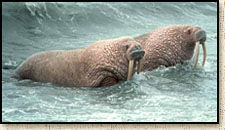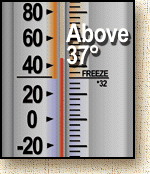|
 
|
"Since
most of the family
was affected, my mom
was feeling very
horrified.
She thought she was
going to lose all of her
daughters, her son-in-law,
and some grandchildren."
|

Marie
Botulism survivor |


Clostridium
botulinum |
Botulism is a poison, or toxin, produced by a germ
that can only be seen through a microscope. The germ is called
Clostridium botulinum. While there are several ways of
getting botulism, almost all botulism in Alaska is from eating food
contaminated with botulism poison. |


In soil |

In water |

In fish |

On marine animals |
Botulism germs are commonly found  |
in the soil |
 |
in water |
 |
in fish |
 |
on marine
animals |
|
As a result, people can easily come into contact
with the botulism germs.
The germs themselves are harmless, unless they find the right growing
conditions to produce poison.

| The germs form a protective coating and become spores.
|
This allows the germs to survive until they are in an ideal situation that
can help them grow.
When they find an ideal growing situation, they start producing poison.
|

|
|
This animation is programmed to repeat 8 times.
Refresh your
browser to restart animation.
|
|
|


|
Botulism poison is one of the most deadly poisons in
the world. Just a teaspoon of pure botulism poison could kill millions of
people. Even just
a taste of contaminated food can make a person sick. |

Botulism germs grow best and produce their poison when
there is  |
No fresh
air |
 |
When the temperature is above 37 degrees Fahrenheit
|
|

|

 |
Botulism is a deadly poison produced by a germ. |
 |
Botulism germs are commonly found in the soil
and water, in fish, and on marine animals. |
 |
Botulism
germs grow best and produce their poison when there is no
fresh air and when the temperature is above 37 degrees
Fahrenheit. |
|
|




